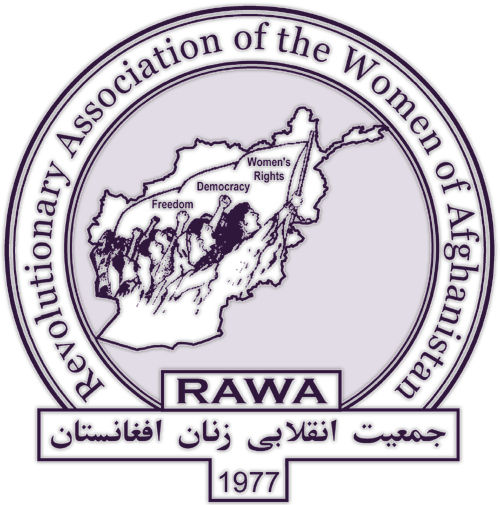WW4 Report
Peru: Amazonian leaders press land demarcation
The Inter-ethnic Association for Development of the Peruvian Rainforest (AIDESEP) on Nov. 22 issued an open letter to President Ollanta Humala, the national congress, and local and regional authorities, demanding that funds for the continued demarcation of indigenous lands in the Amazon Basin be included in the 2013 budget bill now being debated. The letter called for 100 million soles ($38 million) be earmarked for "recognition, titling and territorial expansion of Amazonian communities." The statement asserted that there are 988 identified communities in the rainforest currently awaiting demarcation and titling.
Peru: campesino alliance with 'illegal' miners
On Nov. 11, the Second National Congress of Artisanal Miners was held at Juliaca, in Peru's southern region of Puno, presided over by Hernán de la Cruz Enciso, AKA Tankar Rau Rau Amaru, outspoken president of the National Confederation of Artisanal Miners and Small Producers (CONAMI), pledging to launch new road occupations if the government does not rescind decrees mandating the "legalization" of informal mining operations. A surprise guest was Walter Aduviri, leader of the Aymara campesino struggle in Puno, who has led strikes and protests against mining projects. De la Cruz and Aduviri shared a public abrazo (embrace) and hailed the meeting as "a step towards the consolidation of objectives" of their respective movements. De la Cruz said Aduviri "is against big mining and supports small mining." Peru's pro-business website eeé (for Economy & Energy with Ethics [sic]) on reporting the meeting, added: "Peruvians are now notified of this new alliance of terror and violence, between Tankar Rau Rau Amaru (Hernán de la Cruz) and Walter Aduviri."
Colombia: indigenous peace proposal advanced
An open letter from the National Indigenous Organization of Colombia (ONIC) and the Regional Indigenous Council of Cauca (CRIC) Nov. 22 outlined an "Indigenous and Popular Peace Proposal" that they are demanding be taken up at the talks between the Colombian government and FARC rebels now underway in Havana. The proposal stresses issues not on the agenda at Havana, including the territorial autonomy and traditional authority of Colombia's indigenous peoples. Indigenous leaders will convene a meeting next month to advance the proposal and press demands for openinig the peace process to popular participation. The meeting will be held at the village of La María de Piendamó, Cauca department, which has been declared a "territory of peace and dialogue."
Pakistan to Lebanon: Shi'ites under attack
A bomb killed at least eight—including four children—and wounded some 70 at a Shi'ite procession marking the Ashura holy day in Pakistan's northwestern town of Dera Ismail Khan, Khyber Pakhtunkhwa, Nov. 24. The Pakistani Taliban claimed responsibility. "We carried out the attack against the Shi'ite community," spokesman Ehsanullah Ehsan told AFP by phone from an undisclosed location. "The government can make whatever security arrangements it wants but it cannot stop our attacks." (Reuters, Nov. 25; AFP, Nov. 24) On Nov. 25, a second blast targeting an Ashura procession in Dera Ismail Khan left at least a further four dead. (BBC News, Nov, 25) The blasts follow a suicide attack that killed 23 at a Shi'ite procession in the garrison city of Rawalpindi—Pakistan's deadliest bombing for five months.
Egypt: cries for revolution against 'pharaoh' Morsi
Clashes between opponents and supporters of President Mohamed Morsi were reported throughout Egypt Nov. 23, as protesters filled the streets to decry Morsi's decree exempting his decisions from legal challenge until a new parliament is elected. Street-fighting erupted in the governorates of Alexandria, Ismailia, Assiut, Port-Said, Suez, Mahalla, Damietta, Daqahilya, Menya and Aswan. Protesters attacked Muslim Brotherhood offices in several cities, including Alexandria. In Cairo's Tahrir Square, thousands chanted "Morsi is Mubarak, revolution everywhere!" When police tried to clear the square with tear-gas, protesters fought back with hurled rocks and Molotov cocktails. At least 18 were injured across the country.
Iraq: army, Peshmerga in stand-off at Kirkuk
An ongoing stand-off between an elite force of Iraq's national army and Kurdish Peshmerga forces around the contested northern city of Kirkuk led to skirmishes that left two dead and several wounded at the village of Tuz Khurmatu this week. The army's Dijla (Tigris) Operations Command (DOC), launched in June by Prime Minister Nouri al-Maliki, was ostensibly sent to put down the remnants of insurgency in Diyala, Kirkuk and Salahaddin governates. But local Kurdish leaders—including Kirkuk governor Najmaddin Karim, of the Patriotic Union of Kurdistan (PUK)—charge that the real aim of the deployment is to prevent Kirkuk governate from be annexed by the Kurdistan Regional Government (KRG), now made up of the governorates of Erbil (also Arbil or Irbil), Slemani (Sulaymaniya) and Duhok. (See map.) A referendum on the future of Kirkuk, mandated by Aritcle 140 of Iraq's constitution, has been repeatedly put off by the central government.
Gaza truce announced; bombing continues
Israel launched new air-strikes across the Gaza Strip late Nov. 21, even as Egypt's foreign minister Mohamed Kamel Amr announced a ceasefire to end eight days of violence. Missiles fired by an unmanned drone slammed into Deir al-Balah in the central Gaza Strip around 7:30 PM local time, killing a youth and critically injuring another. Another air-strike killed a Palestinian in Gaza City's Sheikh Radwan neighborhood, with six more wounded elsewhere in the city. The ceasefire, announced at a Cairo press conference with the US Secretary of State Hilary Clinton, was to take effect at 9 PM. The Palestinian death toll in the eight days of bombing stands at some 170, with another 1,000 wounded. Five Israelis have been killed, including one soldier. (Maa'n News Agency, Nov. 21)
Pressure on Rwanda over role in Congo war
Thousands of students protested in the Democratic Republic of Congo cities Kisangani, Bunia and Kinshasa on Nov. 20 after M23 rebels seized the eastern city of Goma. They were mostly expressing their rage at the M23 rebels, but also targeted the government and the UN mission in DR Congo (MONUSCO). Despite government and UN assurances, M23 rebels took Goma with little resistance from either Congolese or UN forces. French Foreign Minister Laurent Fabius said it was "absurd" that UN troops could not stop the rebels from entering Goma. With a 20,000-strong military and civilian staff, MONUSCO has a yearly budget of close to $1.5 billion, the second-largest peacekeeping mission in the world (after Sudan).















Recent Updates
10 hours 17 min ago
10 hours 42 min ago
1 day 10 hours ago
1 day 10 hours ago
1 day 10 hours ago
2 days 13 hours ago
2 days 18 hours ago
3 days 9 hours ago
3 days 9 hours ago
3 days 17 hours ago